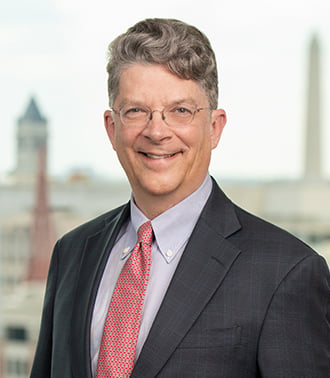BIS Publishes FAQs for Export Controls on Semiconductor and Advanced Computing Items Destined to China
On October 28, 2022, the US Department of Commerce’s Bureau of Industry and Security (BIS) published its first round of Frequently Asked Questions and Answers (FAQs) on the interim final rule announced on October 7, 2022 regarding “Implementation of Additional Export Controls: Certain Advanced Computing and Semiconductor Manufacturing Items; Supercomputer and Semiconductor End Use; Entity List Modification” (October 7, 2022 Rule). (For a discussion of the October 7, 2022 Rule, please refer to our prior Advisory.)
The FAQs cover the following topics: (1) application of the rule to Hong Kong and Macau; (2) definition of the term “facility”; (3) deemed exports and reexports; (4) restrictions on US person’s activities; (5) validity of previously issued export licenses; and (6) encryption controls. Overview of key points for each of these areas addressed in the FAQs are discussed below.
Application to Hong Kong and Macau
Consistent with the treatment of Hong Kong and Macau under the Export Administration Regulations (EAR), BIS confirmed that license requirements appliable to China also apply to Hong Kong. Therefore, Hong Kong would be subject to the additional restrictions applicable to China from the October 7, 2022 Rule.
Macau, on the other hand, is treated as a distinct destination from China under the EAR and thus the additional restrictions applicable to China from the October 7, 2022 Rule do not directly apply to Macau. However, BIS is encouraging exporters and reexporters to conduct due diligence and be mindful of red flags when shipping items to Macau.
Definition of “Facility”
There are a number of provisions where the term “semiconductor fabrication ‘facility’” is used in the October 7, 2022 Rule. While the term “semiconductor fabrication facility” is not specifically defined in the EAR, the term “facility” is defined as: “a building or outdoor area in which people use an item that is built, installed, produced, or developed for a particular purpose.”1 Based on this definition, BIS clarified that a semiconductor fabrication facility is “a building where the production at the restricted technology level occurs” and that subsequent steps at facilities, such as assembly, test and/or packaging facilities, that do not alter the technology levels are not covered.
BIS also addressed how the October 7, 2022 Rule may apply to multiple product lines that may be located in the same building or in the same company campus. In particular, BIS noted that if both restricted and unrestricted product lines exist in the same building, then that building is subject to the new controls because each building is considered a “facility” under the EAR. This guidance suggests that even if a particular export, reexport or transfer is intended for the unrestricted product lines, that export, reexport or transfer would be subject to a license requirement if those unrestricted product lines are located within the same building as restricted product lines. Moreover, BIS further noted that parties should exercise due diligence to ensure that the item/activity only relates to unrestricted fabrication if (1) an entity has multiple buildings that are located on the same campus with the same address and/or (2) multiple buildings located within the same campus/address are part of the same legal entity.
Deemed Exports and Reexports
As reflected in the October 7, 2022 Rule, BIS confirmed that the China-specific Regional Stability (RS) controls do not apply to deemed exports and reexports. However, it should be noted that the items subject to the new RS controls are all subject to Anti-Terrorism (AT) controls and thus may not be exported, reexported or transferred (including through deemed exports and reexports) to or within countries subject to comprehensive embargo, such as Cuba, Iran, North Korea, Syria, and certain regions of Ukraine, unless there is a license or applicable license exception. In addition, under the EAR, items identified on the Commerce Control List (CCL) (which would include the items subject to new RS controls) may not be exported, reexported or transferred to or within Russia and Belarus without a license.
US Persons Restrictions
In the FAQs, BIS referred the industry to the definition of the term “US person” and “person” under the EAR. We note that the EAR defines the term “US person” to include: (1) “Any individual who is a citizen of the United States, a permanent resident alien of the United States, or a protected individual as defined by 8 USC 1324b(a)(3)”; (2) “Any juridical person organized under the laws of the United States or any jurisdiction within the United States, including foreign branches”; and (3) “Any person in the United States.”2
BIS also reiterated the range of activities by US persons that are prohibited under the October 7, 2022 Rule, which are discussed in detail in our prior Advisory. BIS clarified, however, that the restrictions do not apply to US persons engaging in the following activities, unless there is evidence of a violation by such persons:
- conducting administrative or clerical activities (e.g., arranging for shipment or preparing financial documents) in support of a project previously approved by a non-US person;
- implementing a decision made by a non-US person to approve a restricted shipment, transmittal or in-country transfer, or “development” or “production” activities, when these activities are not directly related to the provision of specific items to or servicing of specific items for Chinese fabrication facilities that are developing or producing integrated circuits meeting the criteria of the October 7, 2022 Rule
It is important to note that virtually any type of direct support for servicing by a US person would be prohibited. In addition, non-US persons remain subject to controls on dealing with controlled US content and restrictions imposed under the foreign direct product rule.
Validity of Previously Issued Export Licenses
BIS specified that previously issued export licenses remain valid until their expiration dates, provided that BIS does not take license-specific action to suspend, revoke or impose additional conditions on the previously issued licenses.
Encryption Controls
BIS confirmed, as stated in the October 7, 2022 Rule, that ECCN 5A992.c and 5D992.c items that meet or exceed the parameters of 3A090 or 4A090 are subject to license requirement and review policy for 3A090 and 4A090, in addition to being subject to restrictions or requirements applicable under Category 5, Part 2 of the CCL.
* * *
We anticipate that BIS may issue another round of FAQs or other guidance on the October 7, 2022 Rule. We will continue to monitor and provide updates through our advisories.
*Junghyun Baek contributed to this Advisory. Mr. Baek is a graduate of Harvard Law School and is employed at Arnold & Porter’s Foreign Legal Consultant Office as a Law Clerk.
© Arnold & Porter Kaye Scholer LLP 2022 All Rights Reserved. This Advisory is intended to be a general summary of the law and does not constitute legal advice. You should consult with counsel to determine applicable legal requirements in a specific fact situation.



